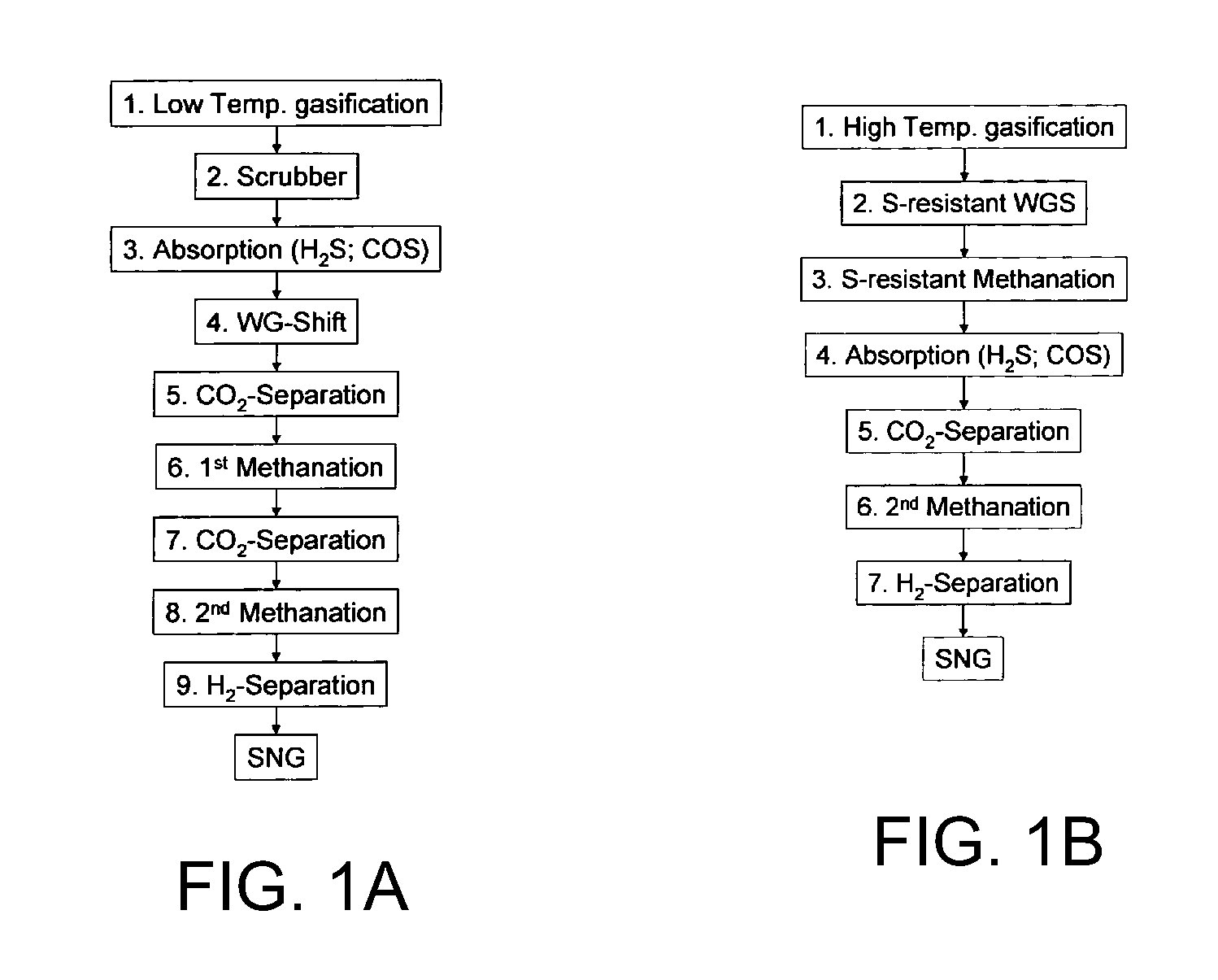Process to Produce a Methane Rich Gas Mixture From Gasification Derived Sulphur Containing Synthesis Gases
a technology of sulphur synthesis and gas mixture, which is applied in the direction of combustible gas production, gaseous fuels, fuels, etc., can solve the problems of high number of operation units and different temperature levels of units, poor raw gas composition, and high amount of poisonous components
- Summary
- Abstract
- Description
- Claims
- Application Information
AI Technical Summary
Problems solved by technology
Method used
Image
Examples
Embodiment Construction
[0012]By means of the subject process, the unfortunate temperature level sequence and the number of operation units of the process shown in FIG. 1a as well as the energetic losses of the process shown in FIG. 1b can be avoided. A methane-rich stream can be produced from sulphur containing feedstocks containing 10 to 95 mol % of methane.
[0013]The first step following the Low-Temperature-gasification is a multifunctional process unit featuring hydrodesulphurization / denitrogenation, methanation, WGS, tar reforming and cracking and the hydrogenation / reforming of alkenes and alkynes simultaneously. The H2S produced from the organic sulphur species by hydrolysis and the COS are removed by absorption on common absorber materials such like ZnO, CuO. CO2 can be removed before or after the 2nd methanation step. For the adjustment of the calorific value excess H2 is separated and may be recycled to unit 2.
[0014]The hydrodesulphurization unit (HDS) is a common process step for the desulphurisat...
PUM
| Property | Measurement | Unit |
|---|---|---|
| temperatures | aaaaa | aaaaa |
| temperatures | aaaaa | aaaaa |
| size | aaaaa | aaaaa |
Abstract
Description
Claims
Application Information
 Login to View More
Login to View More - R&D
- Intellectual Property
- Life Sciences
- Materials
- Tech Scout
- Unparalleled Data Quality
- Higher Quality Content
- 60% Fewer Hallucinations
Browse by: Latest US Patents, China's latest patents, Technical Efficacy Thesaurus, Application Domain, Technology Topic, Popular Technical Reports.
© 2025 PatSnap. All rights reserved.Legal|Privacy policy|Modern Slavery Act Transparency Statement|Sitemap|About US| Contact US: help@patsnap.com



